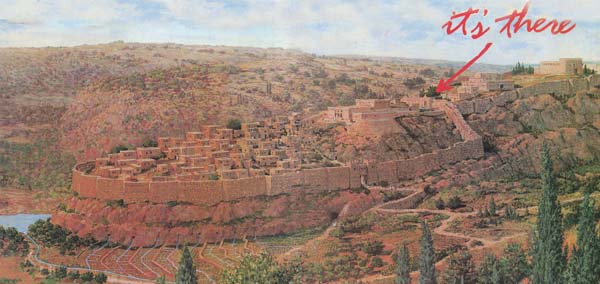Image Details

Lloyd Townsend
When David moved his capital from Hebron to the City of David, he resided in the Fortress of Zion (2 Samuel 5:7), possibly the Jebusite citadel standing inside the city’s northern wall. David then had a palace of his own constructed of cedar wood and dressed stones by Hiram, king of the Phoenician city of Tyre (2 Samuel 5:11)—perhaps the same Hiram who later helped Solomon build the Temple (1 Kings 7:13).
By the time David arrived, Jebusites had inhabited this small, 9-acre site for two millennia; now Israelites, too, were crowding into the city, which was bordered on three sides by steep cliffs. British archaeologist Kathleen Kenyon, one of the excavators of the City of David, thus concluded that David must have built a very small palace within the city’s walls.
Author Eilat Mazar, however, draws a different conclusion: A careful reading of the Biblical text, the geography of the site and records from earlier excavations, Mazar suggests, all indicate that David’s palace stood outside the city. One piece of evidence was turned up by Kenyon’s own excavations in the 1960s, Mazar believes. In Kenyon’s Site H, a 10-foot-wide trench cut across the ridge just north of the City of David, were the remains of an east-west wall that turned south before reaching the ridge’s eastern side. Kenyon thought she had discovered a wall built by Solomon to protect his acropolis; Mazar suggests that this wall may have enclosed the courtyard of the “lower house of the king,” or David’s palace.
Mazar’s hypothesis can be tested by excavation. The critical area has no buildings on it.
